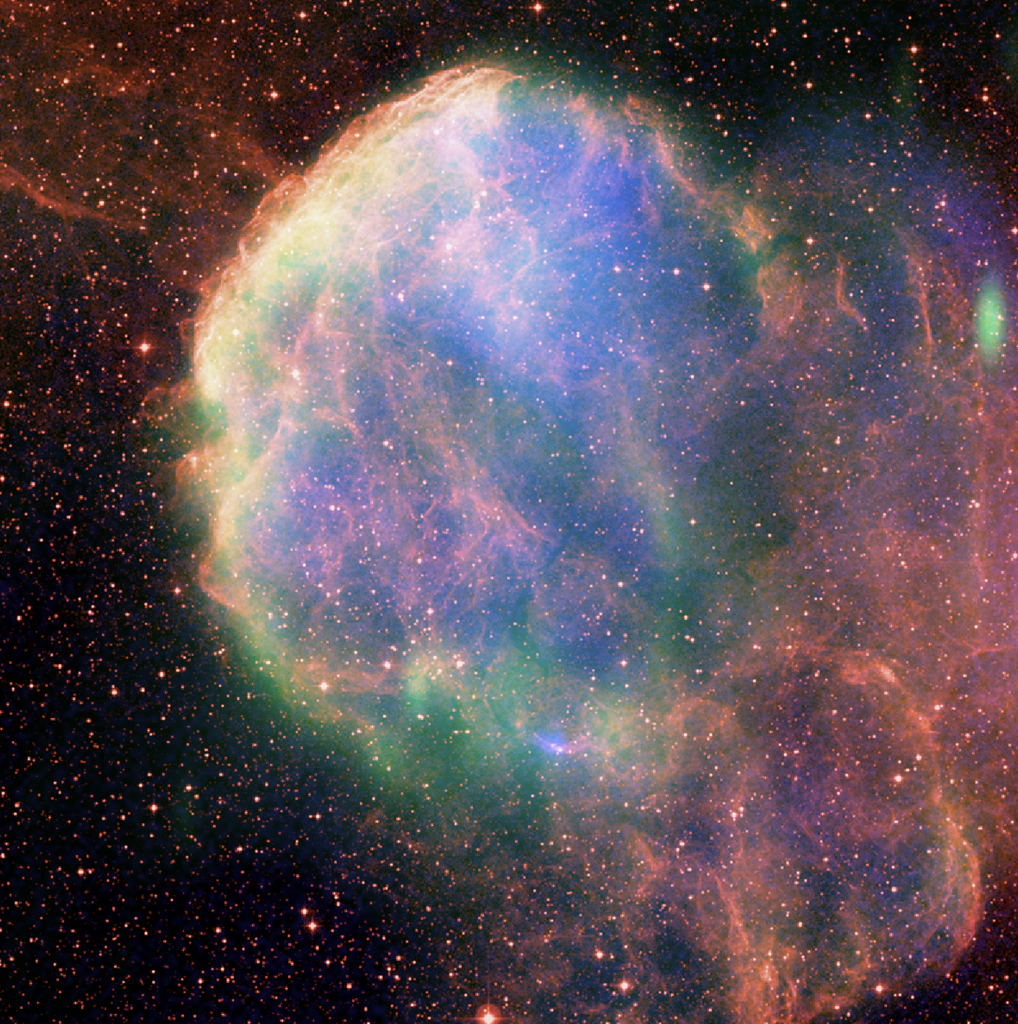
Not far from the bright star Propus in the feet of the constellation Gemini lies the supernova remnant IC443, also known as Sharpless 248, but which is more evocatively known as the Jellyfish Nebula. While it’s a difficult object to see visually, this cosmic echo of a long-dead star presents a superb target for imagers because of its turbulent and complex structure. The nebula, which is about 5,000 light years away, is adjacent to a rich region of new star formation called Sharpless 249 in the Orion Spur of the Milky Way which makes the whole region even more photogenic.
The Jellyfish Nebula got its start when a massive star ran out of fuel, quickly collapsed, and detonated as a supernova about 30,000 years ago in a gas-strewn patch of the Milky Way. The shock wave from the explosion collided with clouds of interstellar gas and set them aglow to produced the intricate lacework of nebulosity that makes up the nebula. Most of the glowing gas is hydrogen, but there are also traces of light from ionized oxygen, sulfur, and other elements.

Astronomers not long ago identified the dense remains of the star that exploded to form the Jellyfish Nebula. This neutron star, with the catchy name CXOU J061705.3+222127, is embedded towards the southern edge of the nebula (in its ‘tentacles’) and radiates radio waves and X-rays as it spins rapidly and plows through a cloud of interstellar gas at 800,000 km/h. The neutron star has a mass of about twice that of our Sun. But its only the size of a small city which means a teaspoon-sized sample of it contains as much mass as a small mountain. The nebula created by the progenitor of this neutron star also appears to overlap with a bubble formed by at least one other supernova from 100,000 years ago. So there’s a lot going on in this little patch of sky. The image at the top of this page shows a false-color composite of visible light, shown in red, with green assigned to areas of radio wave emission. Both appear to overlap extensively. X-rays, on the other hand (show in blue above), are weaker and envelope the entire structure in a nearly spherical shell.
While this composite is beautiful to the eye, a team at NASA made a creative leap to ‘sonify’ the Jellyfish Nebula and a few other intricate deep-sky objects. To create the soundscape, they scan through the image of object from top to bottom and assign a low tone to the visible light (red), a mid-tone to the radio (green), and high tone to the X-ray (blue). For the stars, they assign, entirely arbitrarily, the sound of a water drop which is perhaps appropriate for the nebula’s namesake. It all sounds like this:
It’s a novel effort, but the researchers who developed this sonification technique have a goal of sharing the beauty of the universe with people who are impaired of vision. The project is the subject of an inspiring online documentary. You can see the trailer here, and the full documentary called ‘Listen to the Universe’ at the NASA website.
Share This: